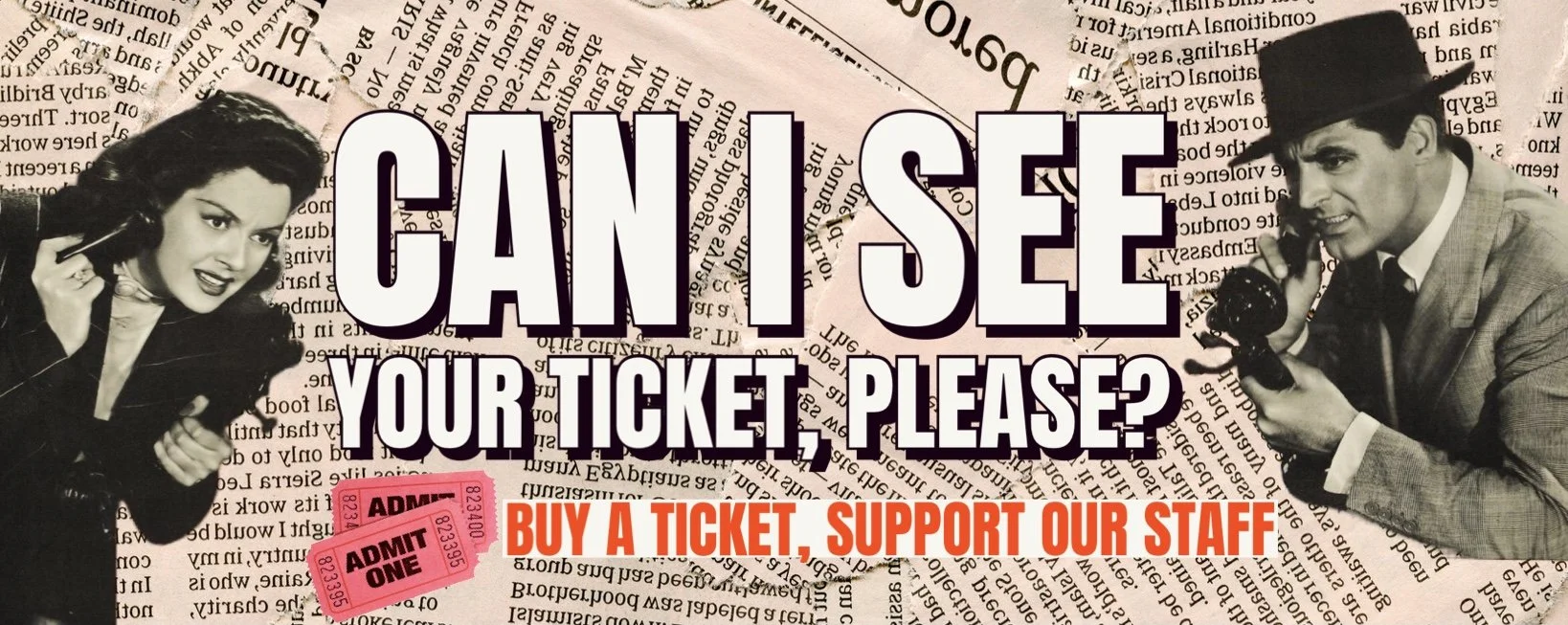Noir Crime: THE HITCH-HIKER, the way of the gun
Greetings Movie Pals!
Before we get to the main attraction, please observe this public service announcement:
Since 2015, each MovieJawn staff writer has contributed to our publication based solely on their love of movies. The only form of payment we have been able to offer is a contributor's copy of our print zine. We are looking to change this.
Below is a preview of a special feature written by one of our staff writers. If you would like to read the article in its entirety, we invite you to visit our Patreon here and purchase this single post. For $5 you will be given the type of writing you have come to expect from MovieJawn... an exemplary article that you will not be able to find anywhere else.
On top of this, two-thirds of your payment will go directly to our staff writer, while one-third will be used to cover overhead costs. With the death of so much print media and meaningful journalism, it is important now more than ever to support the outlets you love.
We strive to pay each and every staff member for their work, but we can't do this without your help. Please consider purchasing this article and becoming a monthly Patreon supporter.
Thanks and remember, watch more movies!
Sneak Peek!
〰️
Sneak Peek! 〰️
In celebration of Noirvember, MovieJawn is collaborating with Erik Kreffel of Noir Crazy! Each week we will walk down the dark alley for a different theme within the genre to peek between the blinds and showcase some of Erik’s work that he created specifically for MovieJawn. Read all our Noirvember articles here.
Copies of Erik’s publication Noir Crazy are available for purchase here as well as other noir themed items. Follow Erik on Instagram, Substack, Twitter, and contact him here for commissions.
by Jo Rempel, Staff Writer
While the Hays Code was in effect, the only way a film could depict violence and cruelty without threat of censorship was if legal justice and moral purity prevailed in the end. This way, the audience would never learn the “wrong” lesson. There could be no crime free of punishment. Following this, understanding that no publicity is bad publicity, no notorious criminal could be depicted, no matter their fate. Let us leave no chance that the wrong lessons will be gleaned from violence.
Ida Luipno had bought the rights to produce a film about the mass murderer Billy Cook from Cook’s attorney. Regulations against newsworthy criminals were against her desire to lean towards contemporary realism as head of Filmakers [sic] productions. A press release written by Lupino and her co-producer Collier Young describes The Hitch-Hiker as “com[ing] to the screen right out of the newspaper headlines,” and after describing Cook’s string of kidnappings and murders across the Southwest United States, boasts that “the William E. Cook story [was] adaptable to excite cinemagoers who knew the loneliness of the open road.” There’s a tension here, between the gung-ho assertion that what’s newsworthy will be a hit, and that bleak sentiment which must follow to be universal, that every American cinemagoer must know “the loneliness of the open road.”
All that Lupino had to do to get her film approved was to change the criminal’s name from William E. Cook to Emmet Myers. The details of his crimes remained largely the same; as did his appearance, including his right eyelid, paralyzed halfway shut. Missing from actor William Talman’s portrayal are a set of finger tattoos reading “HARD LUCK” and then there’s the noticeable age gap between the actor and his subject: with his thick head of hair and perpetual grimace, Cook could have passed for James Dean. But on the screen, righteous anger is a lost cause. As Emmet Myers, Talman is gaunt and stiff, his actions conveyed more by taut close-ups of a gun or a smirk than his physical performance. When he talks about his childhood, about the first time he stole a watch, such a past is faded, aged beyond time alone, like skin left bare in the California Sun
Read the rest of this article here and support Jo!
Visit MovieJawn’s Patreon here to read more and purchase this article for a one time fee of $3. Thanks for your support.
Support MovieJawn
〰️
Support MovieJawn 〰️








